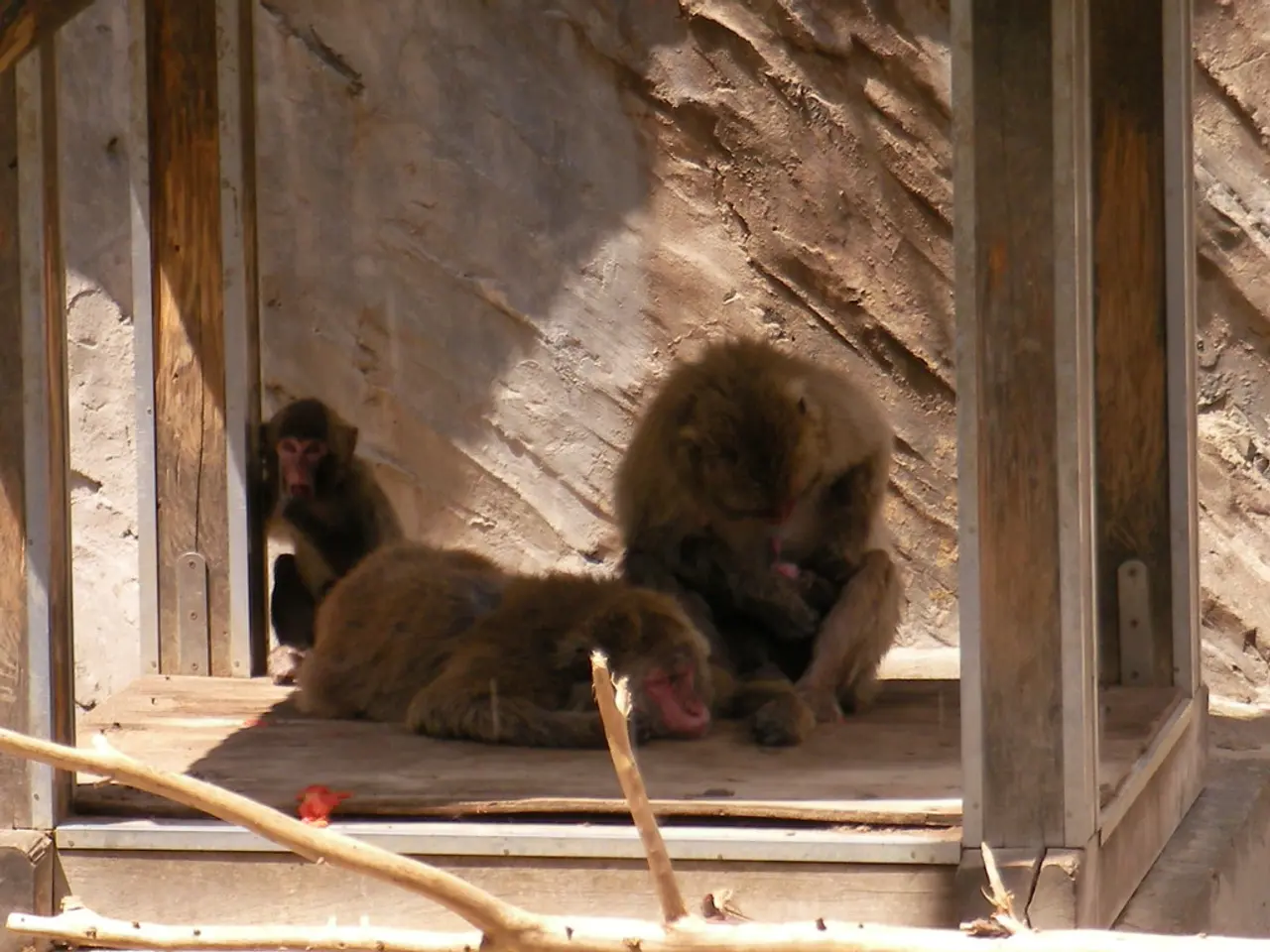Nuremberg Zoo plans on euthanizing baboons.
The Nuremberg Zoo finds itself at the centre of a heated debate, as it considers euthanizing healthy Guinea baboons due to overpopulation. The zoo's baboon population has grown to 43 individuals, exceeding the capacity of their enclosure, resulting in increased aggression, injuries, and a dysfunctional social structure within the group.
The zoo argues that culling is necessary to maintain the welfare of the remaining baboons. Overcrowding, they claim, leads to stress, aggression, and injuries among baboons, harming their welfare. Limited space and social disruption, they add, justify population reduction to preserve the stable social order and health of the group. Previous management strategies like contraception and transfers have not resolved the overpopulation issue.
However, animal rights activists and organisations such as Pro Wildlife and PETA strongly oppose the decision. They accuse the zoo of poor long-term breeding and population management that led to the overcrowding crisis. Demonstrations and social media campaigns emphasise that killing healthy animals is unacceptable and irresponsible. Opponents argue the zoo should have implemented more effective and humane population control measures earlier to avoid culling.
Animal rights organizations PETA and Pro Wildlife have announced they will file a criminal complaint if any killings occur, and the zoo is preparing for the possibility of a trial. Animal rights activists have chained themselves to the baboon enclosure in protest.
The zoo claims it has already attempted to limit the number of baboons by moving some to other zoos, but options are now limited as every zoo has reached its capacity. The zoo also tried to reduce the birth rate by implanting a contraceptive in female baboons, but this led to permanent infertility in the females. The zoo declined offers from several facilities to take in the overcrowded baboons, including the Primate Protection Center WAMS in Wales and an Indian zoo, due to lack of information and unclear conditions.
The baboon group cannot be released into the wild due to a lack of suitable areas in Africa. The German Animal Welfare Act does not address the killing of zoo animals, leaving the debate on whether there is a reasonable cause for the baboon culling to be clarified in society.
The zoo director, Dag Encke, hopes for a fundamental clarification regarding the baboon culling. Pro Wildlife sees a fundamental issue at stake: if the practice of killing unwanted zoo animals becomes established, it could set a dangerous precedent and not stop at just one species.
The Nuremberg Zoo's plan to euthanize healthy baboons due to overpopulation has sparked intense debate, with animal welfare advocates calling for more humane population control measures and the zoo maintaining that culling is a last resort for animal welfare. The situation reflects challenges in zoo population management when space and relocation options are limited.
- The zoo's employment policy should include comprehensive strategies for managing animal populations to avoid such crises in the future.
- Science can provide insights into more effective and humane population control methods for various species, including Guinea baboons.
- Awareness about the importance of workplace-wellness and animal welfare can help prevent similar situations in zoos and other institutions.
- Medical-conditions like infertility, caused by contraceptive implants, need further research to ensure they don't lead to irreversible effects.
- The impacts of chronic diseases like cancer, respiratory conditions, digestive-health issues, and eye-health problems on animals should be studied to understand their role in population management.
- Hearing about the baboons' plight has raised concerns about the treatment of other primates and potentially other animals in captivity.
- Health-and-wellness programs for animals in captivity can help improve their quality of life and prevent various health issues.
- Fitness-and-exercise regimes designed for captive primates can help maintain their physical health and reduce aggression.
- Sexual-health education for animals in captivity can help prevent unwanted pregnancies and overpopulation.
- Autoimmune-disorders, mental-health issues, men's-health concerns, and skin-care requirements in animals should be considered when managing their populations.
- Therapies-and-treatments for animals in captivity can help manage various health problems and reduce aggression.
- Nutrition plays a crucial role in maintaining the health of animals in captivity and preventing overpopulation.
- Aging animals in captivity require special care and consideration to maintain their health and quality of life.
- Women's-health issues, such as hormonal imbalances, affect reproduction rates and should be considered in animal population management.
- Parenting skills are essential for maintaining social order in animal groups, and their absence or disruption can result in dysfunctional social structures.
- Weight-management strategies for captive animals can help maintain a healthy population and prevent overpopulation.
- Cardiovascular-health issues in animals can contribute to aggression and should be addressed in population management strategies.
- Medicare policies should extend to animals in captivity, ensuring their welfare is protected.
- CBD, a compound known for its calming effects, could potentially be used to manage aggression in captive animals.
- Neurological-disorders and skin-conditions in animals could also contribute to aggression and should be considered in population management strategies.
- Education-and-self-development programs for zoo staff on animal welfare and population management can help improve outcomes for animals.
- Personal-growth and big-wins in managing animal populations can lead to increased job satisfaction and improved career development.
- Responsible-gambling practices can prevent problem gambling among zoo staff, ensuring their focus remains on the welfare of the animals.
- Skills-training programs for zoo staff can help them handle various challenges and improve animal welfare.
- Sports like football, baseball, hockey, golf, basketball, racing, tennis, and mixed-martial-arts offer opportunities for zoo staff to unwind and foster team spirit.
- Weather patterns can affect animal populations and should be considered in zoo population management strategies.
- Casino-and-gambling, lotteries, las-vegas, gambling-trends, casino-personalities, job-search, casino-culture, and sports-betting, while not directly related, have no place in discussions about captive animal welfare or zoo population management.





